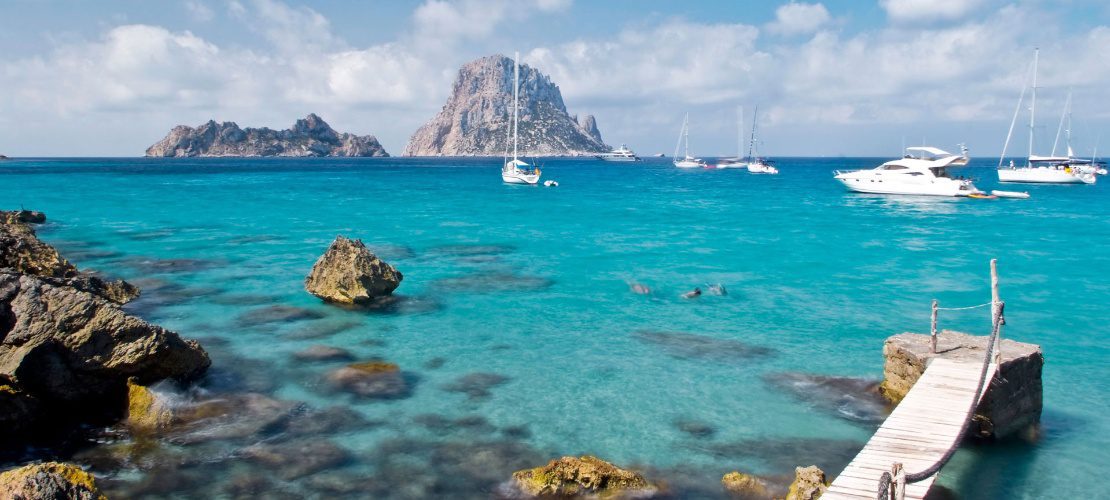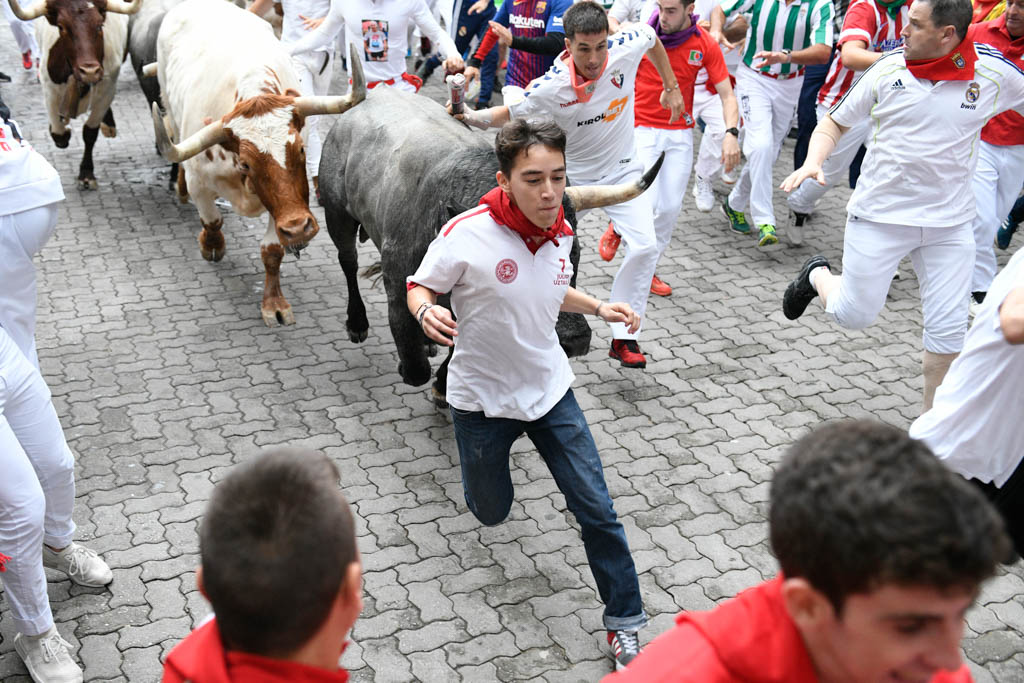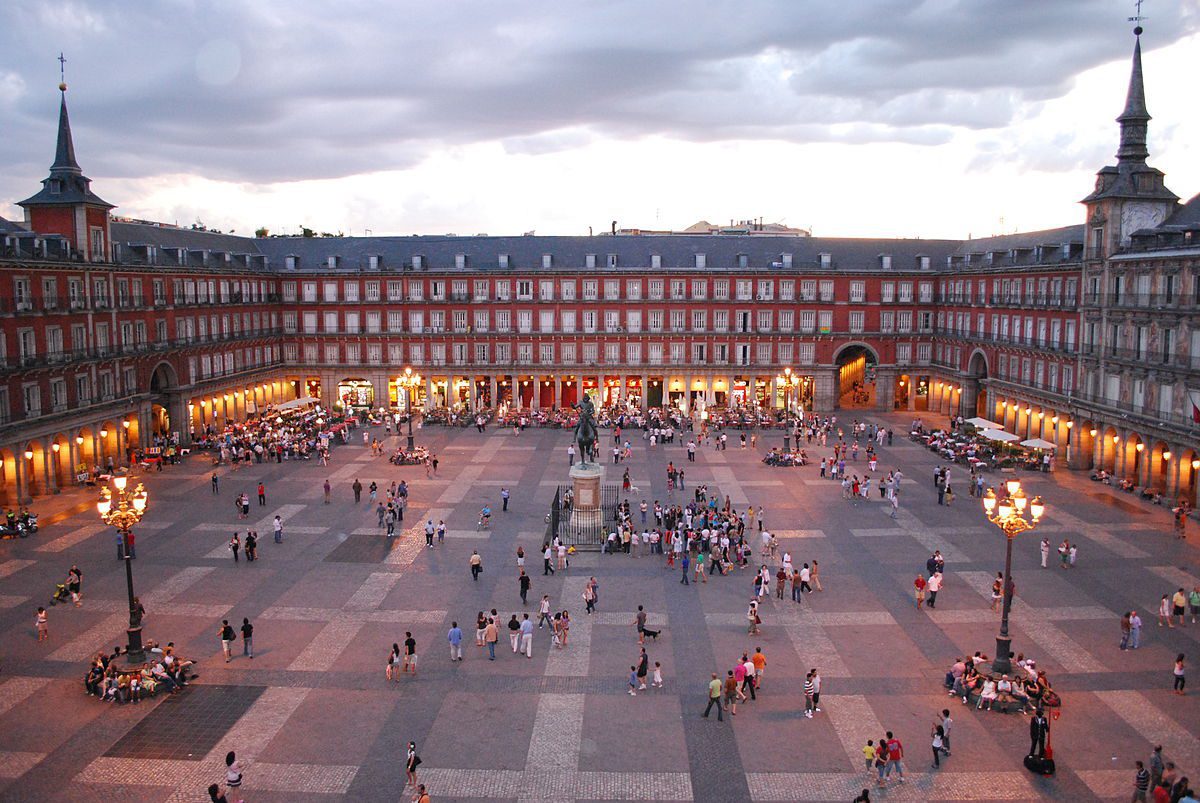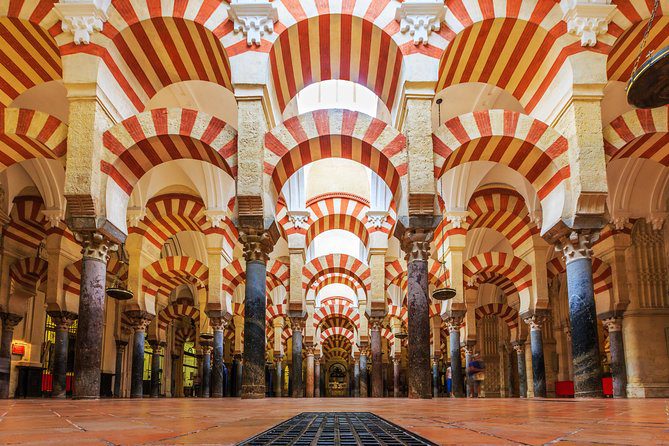Table of Contents
Magnificent beaches, extraordinary cuisine, lively people, and spirited celebrations make Spain Europe’s best getaway. It covers several autonomous territories and islands. Spain offers varied cultures, traditions, and landscapes. This makes Spain a country that is rich in happy and contented visitors.
Top 10 attractions of Spain
For this list of top 10 attractions of Spain, we have chosen those monuments, buildings, sites, regions, or activities that draw many tourists per year and have either historical, cultural, architectural, or archaeological significance as opposed to just specific cities that are popular among tourists.
1. Prado Museum

Prado Museum
The Prado Museum in Madrid holds the most extensive and unique collection of paintings. It gives a detailed overview of Spain’s splendid past, from the Golden Age through its gradual fade. In the 1500s, Spain was flushed with gold from America and was dominantly ruled by Emperor Charles V. With such great significance. You can imagine the art and culture preserved in this museum all through those years.
Undoubtedly, people are more eager to visit Madrid than any other. It was already an important landmark when inaugurated in 1819, no more than 13 years before Ferdinando Brambilla painted a splendid view of its northern entrance. Yet, with its vast dimensions and granite columns, the grand, simple construction does not fully suggest the impression it provokes on the three million visitors each year. It is probably because the building originally was not meant to be an art gallery. King Charles, the third of Spain, had ordered the construction of a royal Natural History Museum. The architectures of that time suited a rational display of natural wealth. In 1818, Queen consort of Spain inspired King Ferdinand VII, a new usage for the still empty building.
She proposed that some masterpieces of the royal collection should be moved there. When it was finally inaugurated on 19 November 1819, there were only 311 paintings. But it soon became a successful, world-famous institution. Consequently, more and more paintings from royal palaces and musicians were allocated to the Prado Museum. It was then mostly known for its painting collections rather than sculptures.
Moreover, 19th-century display conditions aimed solely at impressing the visitors with quantities. The museum’s approach today is different. They first select a few masterpieces with their guided tools and then give back their true colors. Finally, the gallery talks will provide you with meaningful context for each work. If you would like a guided visit, you can book one for yourself from their official website. This museum truly is a colorful representation of Spain and its rich history.
2. Royal Palace of Madrid

Royal Palace Of Madrid
The capital of Spain, Madrid, is situated right in the center of the Iberian Peninsula. This city offers a splendid combination of modern infrastructure and historic architecture. The Palacio Real de Madrid or Royal Palace Of Madrid is Madrid’s most significant building. This architectural complex was built for use as a place of relaxation, recreation and as a residence for the members of various Spanish royal families. This palace was built on the site of the old Alcazar, the Moorish castle destroyed by fire in the 18th century. The facades of the palace combined two types of materials to provide chromatic contrast. Abundantly used granite is found in bases and on flat walls. In contrast, the white limestone of Colmenar de Oreja is used for bases, columns, pilasters, cornices, etc.
The Sabatini Gardens are found along the northern front of the Royal Palace. These gardens were created in the 1930s but followed the design of the 18th-century architect, who gave the gardens his name. Fountains, hedges, and benches are organized in a symmetrical layout in the classic French garden style. Italian architect, Francesco Sabatini, redesigned many emblematic monuments in Madrid. Forty-four statues of Spanish monarchs lie in the square. Near the staircase presiding over the park is a statue in memory of Carlos III, the monarch who reformed teaching and promoted research and the spread of knowledge.
The Plaza de Oriente is a pedestrian square bordering Madrid’s royal palace. At the center of the square, on a large pedestal, is a massive statue of King Philip IV, decorated with statues of lions and allegorical figures. During his short reign as King, Jose I launched a project to open up the east side of the Royal Palace to create a new square. Today, visitors from all over the world come here to marvel at this architectural beauty.
3. Seville

Seville
The history of this city stems back to the ancient era when the locals called it Ispal. In 206 BC, the ruler founded Italica in Santa Pompeii, where important Roman emperors such as Trajan and Hadrian were born. Julio Caesar himself founded Colonia Julia Romula Hispalis, latinizing the indigenous name Ispal. Its river became known as the Bettis River during Roman times. Christianity soon reached the city, and in the 3rd century, the holy sisters Justa and Rufina, patronesses of the city, were martyred. But during the 5th century, the town was successively conquered by the Vandals. When it came under Muslim rule, the city’s name was Arabized as Isbiliya, and the River Bettis was renamed Guadalquivir, which means “Big River,” a designation still used today.
This was followed by a city revitalization, culminating in the 20th century. The Ibero-American exposition in 1929 and the Universal Exposition in 1992 gave the city a new urban layout. They improved infrastructure, including a high-speed rail, establishing Seville as today’s modern city. Seville is also famous for the passion of its Holy Week, April Fair, tapas, fried fish, and its friendly people. It offers the perfect combination of glorious history and contemporary facilities.
4. Ibiza

Ibiza
Three strong pillars define Ibiza and help establish the island as a top Spanish destination over the spring and summer: the turquoise waters, the music, and the mystical vibe. Discovered by the hippies and adored by the world’s most lively travelers, it has been a hot spot in the Mediterranean since the 70s. Everyone knows Ibiza is synonymous with music and dance. It is one of the top party spots in the world, but it’s also about enjoying beautiful sunny days, a meeting point for those who seek peace, as well as dancing the night away.
Just a two-hour flight away from London or Paris, Ibiza is an international spot yet at the same time proud of its Balearic roots. Ibiza has blossomed throughout the years in an intuitive, engaging way, keeping its history and culture alive and kicking while at the same time evolving into a highly cosmopolitan place where all diversity is welcome. Nature plays center stage in Ibiza, with beaches and coves of dramatic contours and at least 50 shades of blue. Moreover, the island’s rose-tinted earth and grey-green vegetation envelop you in a dreamlike state. Anyone who spends time here wants to keep coming back. Everything and everyone here seems to emanate that same positive vibe of the 70s when freedom of expression and a sense of community were the names of the game.
5. Camp Nou

Camp Nou
Football is, of course, huge in Spain. The country boasts several important venues for the sport. Barcelona’s Camp Nou is nothing but hands down impressive. With seating for almost 100,000 attendees, it is Europe’s largest stadium in terms of capacity and the second-largest football stadium in the world. The stadium’s construction lasted three years, costing almost 1.73 billion euros. Opened in 1957, there are plans to remodel the stadium and add thousands of seats for the avid fans who clamor to get in. The work on this project is expected to start this summer, with the project inauguration of the stadium in 2025. If you are a football fan, this is a holy grail for you of all the football stadiums in the world.
6. Running of the Bulls, Pamplona

Running Of The Bulls, Pamplona
In the northern town of Pamplona in the Navarre region of north Spain, every year from 6th to 14th July, people celebrate the Running Of The Bulls, where half a dozen; Spanish bulls are led through the streets of the old quarter and chased into a crowd of willing thrill-seekers. The bulls chase the runners, charging behind them for a total of 825 meters, which lasts on average about three or four minutes. However, it can take up to ten if a bull gets isolated and reconnected with the group.
The event proceeds as the run begins when the clock strikes eight o’clock in the morning. After that, the bulls charge from the starting mark, signaled by the setting off of two rockets. The third rocket is signaled after the run is over and all the bulls have found their way. The fourth and final rocket is launched to signify a complete end to the event. The Running Of The Bulls traditionally takes place in honor of San Fermin, patron saint of Navarre, who died in 303 AD. It has turned into a global celebration where many people come together to take part in tradition themselves and have fun. Because of the risky nature of this event, several safety precautions are taken to protect runners and onlookers. The town’s streets are completely cleared of all non-runners before 8 AM, and a secure fence marks out the bulls’ path to separate those taking part from onlookers. The runners are also required to be sober during the race and over the age of 18. Keep in mind that if you want to be a part of this event, you will have to visit Pamplona in the marked days of July.
7. Plaza Mayor, Madrid

Plaza Mayor, Madrid
This rectangular plaza is surrounded by residential buildings with balconies facing the plaza itself. It has a total of nine entranceways. This impressive square is now one of the main stops on any tourist’s visit. The origins of the plaza are found in 1576 when Philip II decided to remodel this busy and chaotic area. The first project was designed in 1560, but construction did not start until 1617, during Philip III’s reign. The king asked the architect to continue with the project, which finished in 1619. The Plaza mayor’s existing building was conceived by Juan de Villanueva, who completed the difficult task of its reconstruction after enormous fires engulfed the previous structure.
Originally built outside the main city walls, this plaza has hosted bullfights, symphonies, markets, and executions. Nowadays, it is filled with tourist shops and cafes from corner to corner. The statue of Philip III sits in the middle across from the Casa de la Panadería. This beautifully painted building once served as the headquarters of the bakers’ guild and now houses a tourist information office.
8. Mosque-Cathedral of Córdoba

Mosque-Cathedral Of Córdoba
The Mosque-Cathedral of Córdoba is rich with over a thousand years of history. Its construction began in the 8th century on the ruins of the Visigothic church, constituting one of the first mosques in Islam. Its beauty can be guessed watching the delicate decoration of its doors. You enter the mosque’s courtyard, where you can feel the temple’s tranquility with orange trees, cypresses, and palms.
After that, you access the interior of the old mosque, and the vast forest of columns welcomes you. There are 856 columns with double arches in red and white due to the combination of stone and bricks. Every step you make, you will see greater wealth in the decoration, which distinguishes different periods of building enlargement along the centuries. You can appreciate the beauty of the magnificent dome. The façade is composed of a whole show arch decorated with colorful mosaics expressly brought from Byzantium. A few steps ahead within the temple, you will see the cathedral built between the periods of the Renaissance and Baroque, which constitute another work of great beauty. This building is a must-see for anyone with even a minimal interest in history.
9. The Alhambra

The Alhambra
In the year 711, North African Muslims crossed the straits of Gibraltar and quickly conquered the entire Iberian Peninsula, eventually converting most of its inhabitants. For more than 700 years, Spain served under dominant Muslim rule. The Alhambra sits on a plateau overlooking the city of Granada. It is the last and most fabulous Moorish palace. Nowhere else does the splendor Al-Andalus shines so brightly.
Up until 1492, Granada was the capital of the Moorish empire. While the rest of Europe slumbered through the Middle Ages, the Moorish civilization was wide awake and vibrant. It made tremendous gains in engineering and medicine. Facing a reflecting pond in Alhambra, the hall of the ambassadors served as the throne room. It was here that the sultan received foreign emissaries. Its wooden ceiling illustrates a command of geometry. With 8,000 pieces inlaid like a giant jigsaw puzzle, it symbolizes the complexity of its infinite universe. Like the sultan, you can escape from the palace into a perfect Arabian garden in Andalusia. This royal summer retreat has been described by historians as the closest thing on earth to heaven.
Finally, in 1492, the Moors were defeated. The victorious forces established their rule with gusto in this last Moorish stronghold. This victory helped to provide the foundation for Spain’s Golden Age. Within a generation, Spain’s king became the most powerful man globally. After the reconquest, he built a Renaissance palace right in the middle of the Alhambra grounds. The Alhambra is one of the most visited sites in Spain as countless visitors tour its citadel, palaces, gardens, and other points of interest.
10. Sagrada Família

Sagrada Família
This famous structure inspires awe by its sheer verticality. Like the cathedrals it emulates, Sagrada Família is still under construction after more than 100 years. Sagrada Família was Antony Gaudi’s last project. He was obsessed with seeing its completion. However, at his death in 1926, only a relatively small portion of the monument had been completed. Gaudi was laid to rest here in the crypt, and his work is now planned to be finished sometime in this decade.
Gaudi gave the towers swelling outlines, inspired by the peaks of Montserrat. He entrusted them with a tangle of sculpture as well. On the left side of the church is the nativity façade, which tells the story of Christ’s birth. On the right is the passion façade, which documents Christ’s last days and his death. The glory façade, which is still under construction, will be a dedication to the glory of Christ. Nowadays, you visit a building site, but the completed sections and the museum can be explored at leisure or guided tours. Unfinished as it may be, it still attracts more than 2 million visitors a year and is the most visited monument in all of Spain.
Conclusion
When we travel, we look for a place full of culture, art, history, entertainment, and delicious food. These days, we tend to get all this in every country. However, Spain has always been one of the favorite tourist places in Europe and worldwide. The unique Spanish gastronomy, its sunny weather, its diverse architecture, and its thriving history are only some reasons why this country attracts countless visitors every year.